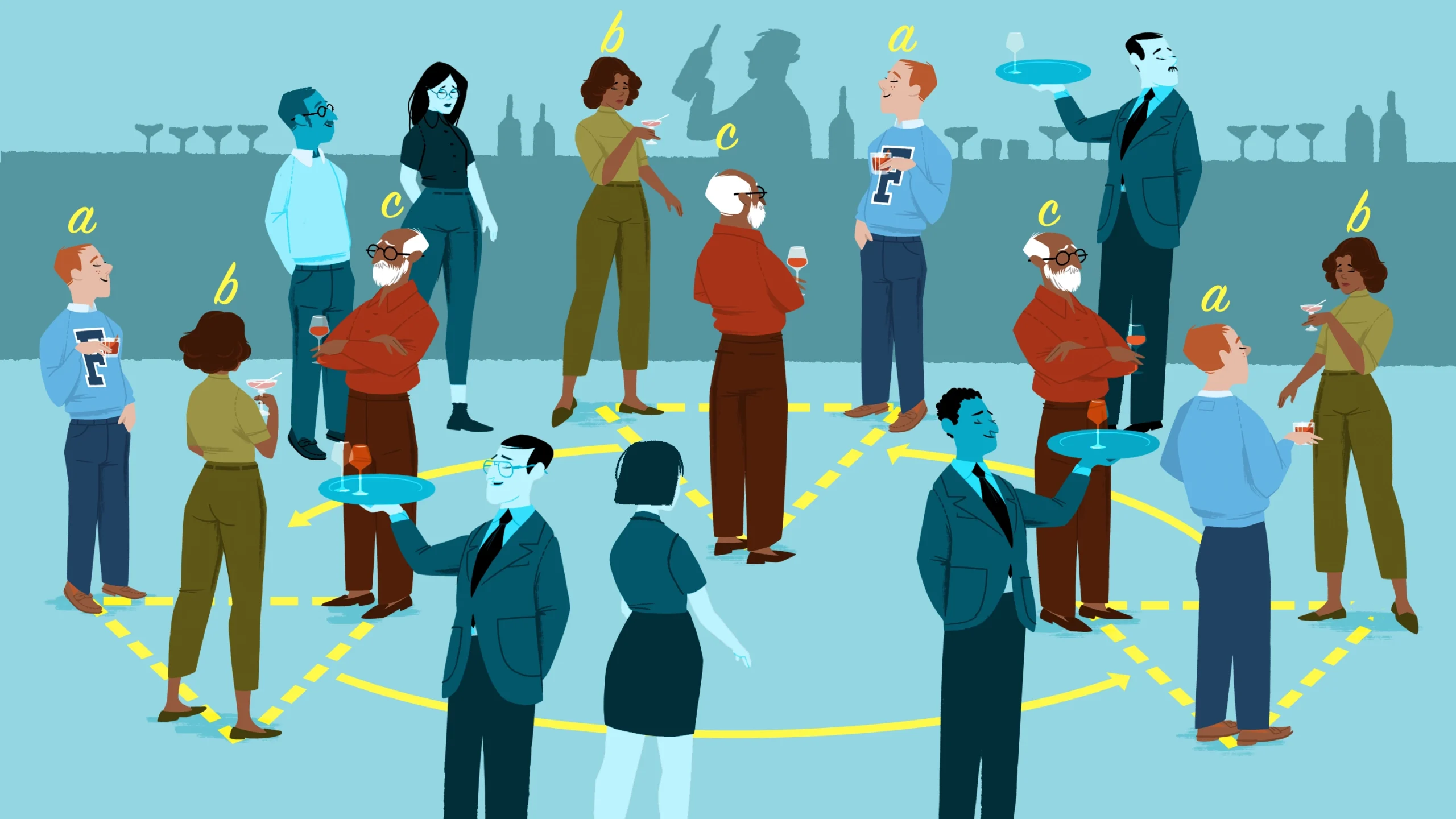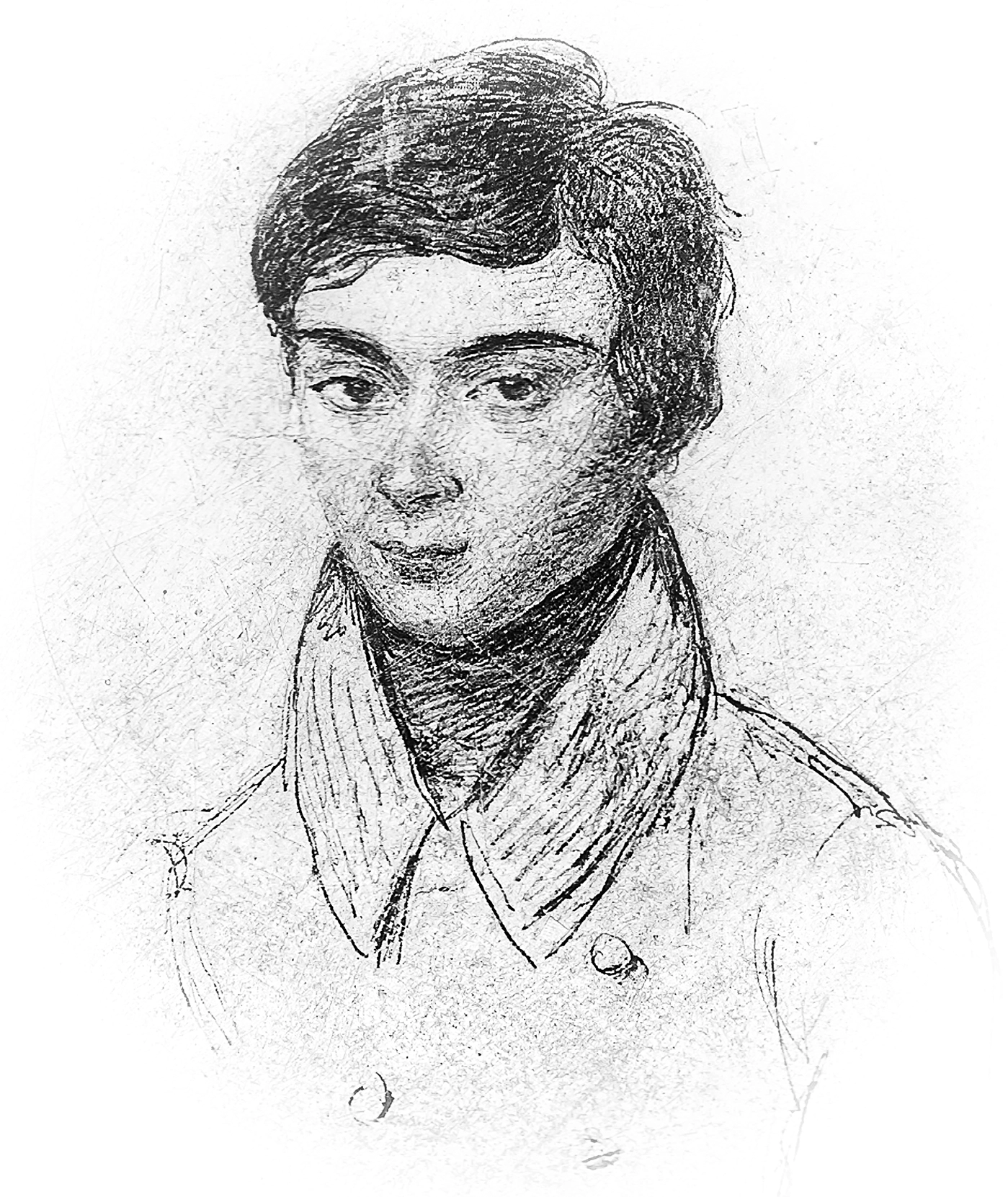‘Groups’ Underpin Modern Math. Here’s How They Work.

Adam Nickel for Quanta Magazine
Introduction
Mathematics started with numbers — clear, concrete, intuitive. Over the last two centuries, however, it has become a far more abstract enterprise. One of the first major steps down this road was taken in the late 18th and early 19th centuries. It involved a field called group theory, and it changed math — theoretical and applied — as we know it.
Groups generalize essential properties of the whole numbers. They have transformed geometry, algebra and analysis, the mathematical study of smoothly changing functions. They’re used to encrypt messages and study the shapes of viruses. Physicists rely on them to unify the fundamental forces of nature: At high energies, group theory can be used to show that electromagnetism and the forces that hold atomic nuclei together and cause radioactivity are all manifestations of a single underlying force.
The term “group” in a mathematical context was coined in 1830 by Évariste Galois, a French prodigy, just 18 years old at the time. (Two years later, he would be killed in a duel, having already changed the course of mathematical history.) But he didn’t discover groups single-handed. “It’s not like a bunch of mathematicians got together one day and said, ‘Let’s create an abstract structure just for a laugh,’” said Sarah Hart, a group theorist at Gresham College in London. “It emerged gradually, over maybe 50 years in the 19th century, that these were the right rules to require. They give you the most flexibility and generality, while still allowing you to prove things.”

Évariste Galois helped lay the foundations for group theory as a teenager.
Public domain
A group is a set, or collection of objects, together with an operation that takes in two objects and outputs a third. Arguably the simplest example is the integers and the operation of addition. Groups must satisfy four rules.
- The first is called closure: Add any two integers and you’ll get another integer.
- The second rule is called associativity: If you add three numbers together, the result doesn’t depend on how you group them. You can add 3 and 4 to get 7, then add 5 to get 12. Or you can add 3 to the sum of 4 and 5. Either way, you’ll still get the same answer: 12 = (3 + 4) + 5 = 3 + (4 + 5).
- The third rule is that the group must contain an element that leaves other group elements unchanged, called an identity element. The number zero is the identity for addition, since adding zero to a number keeps that number the same.
- Finally, each group element must have an inverse — add an element and its inverse, and you’ll get the identity. In the integers, the inverse of a number is its negative. For example, 3 + (−3) = 0.
To understand the significance of these four properties, it helps to consider a noteworthy omission. When adding two numbers together, you can change the order without affecting the outcome: 3 + 5 is the same as 5 + 3. This property is called commutativity. But there’s no requirement that groups be commutative. By making this property optional, mathematicians have been able to explore a rich variety of structures.
For an example of a noncommutative group, consider an equilateral triangle with labeled corners. If you rotate the triangle a third of the way around or flip it along its vertical axis, the only thing that will change about the image is the locations of the labels. There are six of these transformations that leave the shape otherwise unchanged, called symmetries of the triangle. They form a group called D6. (More generally, D2n is a group formed by the symmetries of a regular shape with n sides, so D8 is the group of symmetries of a square.)
Mark Belan for Quanta Magazine; source: 5W Infographics
To “add” two symmetries, just do one after another. You will quickly find that D6 is not commutative: Flipping then rotating leaves the labels in different places than they will be if you rotate then flip.
D6 is one of only two possible groups with six elements. For the other example of a six-element group, take the numbers {0, 1, 2, 3, 4, 5} as the set. For the operation, add two numbers in the usual way and then divide by 6, ignoring the quotient but retaining the remainder. So 3 and 5 deliver 2, since 8 leaves a remainder of 2 when divided by 6. This is called addition modulo 6, and the group is called Z6. In general, Zn is a group with n elements obtained from the numbers {0, 1, 2, 3, …, n − 1} together with addition modulo n. Unlike D6, Z6 is commutative, because 3 + 5 = 5 + 3, and so forth.
Z6 and D6 have different structures. Not only is one commutative and the other not, but you can generate any element of Z6 using just one of its elements, the number 1: Start with 1, then keep adding 1. In D6, no element has this property. Figuring out the possible structures of groups has been one of the central projects of algebra over the last century.
To do this, mathematicians try to identify smaller groups contained within a group, called subgroups. These must retain the operation used for the full group. For example, the even integers form a subgroup within the integers. An even integer plus an even integer always results in another even integer. On the other hand, the odd numbers are not a subgroup, since if you add two odd numbers, you’ll get an even number. The identity element always forms a subgroup by itself, called the trivial subgroup.
Figuring out what subgroups a group contains is one way to understand its structure. For example, the subgroups of Z6 are {0}, {0, 2, 4} and {0, 3} — the trivial subgroup, the multiples of 2, and the multiples of 3. In the group D6, rotations form a subgroup, but reflections don’t. That’s because two reflections performed in sequence produce a rotation, not a reflection, just as adding two odd numbers results in an even one.
Certain types of subgroups called “normal” subgroups are especially helpful to mathematicians. In a commutative group, all subgroups are normal, but this isn’t always true more generally. These subgroups retain some of the most useful properties of commutativity, without forcing the entire group to be commutative. If a list of normal subgroups can be identified, groups can be broken up into components much the way integers can be broken up into products of primes. Groups that have no normal subgroups are called simple groups and cannot be broken down any further, just as prime numbers can’t be factored. The group Zn is simple only when n is prime — the multiples of 2 and 3, for instance, form normal subgroups in Z6.
However, simple groups are not always so simple. “It’s the biggest misnomer in mathematics,” Hart said. In 1892, the mathematician Otto Hölder proposed that researchers assemble a complete list of all possible finite simple groups. (Infinite groups such as the integers form their own field of study.)
It turns out that almost all finite simple groups either look like Zn (for prime values of n) or fall into one of two other families. And there are 26 exceptions, called sporadic groups. Pinning them down, and showing that there are no other possibilities, took over a century.
The largest sporadic group, aptly called the monster group, was discovered in 1973. It has more than 8 × 1054 elements and represents geometric rotations in a space with nearly 200,000 dimensions. “It’s just crazy that this thing could be found by humans,” Hart said.
By the 1980s, the bulk of the work Hölder had called for appeared to have been completed, but it was tough to show that there were no more sporadic groups lingering out there. The classification was further delayed when, in 1989, the community found gaps in one 800-page proof from the early 1980s. A new proof was finally published in 2004, finishing off the classification.
Many structures in modern math — rings, fields and vector spaces, for example — are created when more structure is added to groups. In rings, you can multiply as well as add and subtract; in fields, you can also divide. But underneath all of these more intricate structures is that same original group idea, with its four axioms. “The richness that’s possible within this structure, with these four rules, is mind-blowing,” Hart said.



